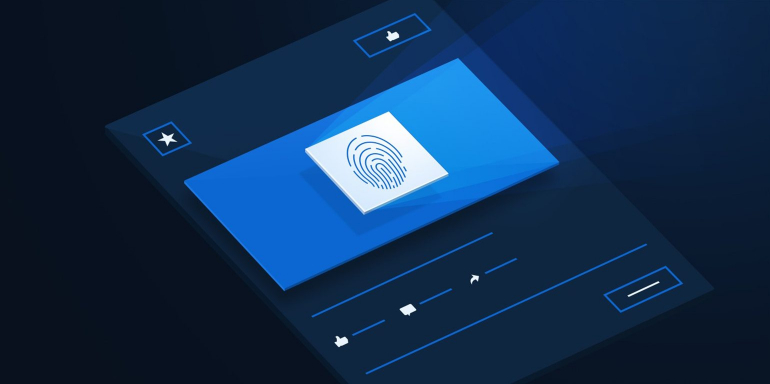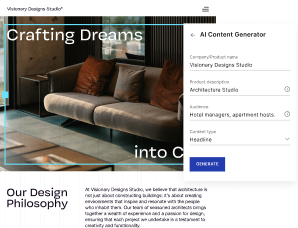There’s no escaping them. You hear them on the radio, see them on TV, on the side of the freeway, in your search results, and practically everywhere else.
As a society, we’ve become numb to them, to the point where we install DVR with our TV packages, pop-up blockers when searching online, and subscribe to satellite radio to limit our exposure. Many of the ads we’re exposed to on a daily basis are irrelevant to our individual wants and needs. But that’s changing before our very eyes.
Before TV and the Internet, the limited number of media channels forced brands to have a one-size-fits-all approach with their ads. Advanced targeting and personalization didn’t exist. However, with technology advancements, brands can now target customers with more relevant ads, send them to dedicated pages for the promotion, and track their ROI more effectively.
Before we break down how post-click landing pages enable marketers to collect more leads and nurture them to sale, let’s start at the top.
What is advertising?
What began with simple posters 400+ years ago, has evolved into iBeacon based digital signage who, in the last five years (from companies like Estimote), have radically altered advertising.
Ads like this one shown in the 2002 sci-fi thriller Minority Report are not as far-fetched as they once seemed:

We like how Dr. Douglas Hawks at Study.com defines advertising:
Advertising is the action of calling public attention to something, especially by paid announcements. Note that the definition uses the term 'action of' and doesn't specify that advertising is limited to print media, television, Internet, or any other specific medium. While it does place an emphasis on 'paid announcements,' it isn't a requirement.
Advertising is the part that involves promoting your business, product, and services to your target audience. To do that effectively, marketing teams develop strategies for messaging, ad placement, frequency, etc. Furthermore, there are many places ads can be shown, such as newspapers, direct mail, billboards, television, radio, and of course online.
Obviously, advertising plays a critical role and requires a variety of mediums to produce positive returns. So much so that it is typically the largest expense of most business plans, followed by public relations, and market research, third.
To that end, I like how our Paid Marketing Manager, Patrick Holmes, defines Digital Advertising (more specifically), and not just advertising in general:
Then, consider this startling fact as it relates to digital ad spending:
Advertising is a subset of the whole marketing discipline. Breaking it down further, there are designated sections for market research, media planning, public relations, product pricing, distribution, customer support, sales strategy, and events.
With all of those complementary pieces, brands cannot enjoy the highest return on investment unless they take personalization into account. This leads me to personalized advertising.
New: Advertising Personalization Classification System
Personalized advertising is the act of using insights into who a customer might be to increase the relevancy of an ad. These insights can be as simple as human wants/needs, geolocation and basic demographic information to more specific insights such as a niche interest, buying intent, and even behavioral patterns.
All of these insights are variables brands should consider when targeting ads to get more audience engagement and ultimately sales. Without them, you may as well use the shotgun approach and blast your messages to the masses in hopes of seeing positive returns.
As seen here, there are six levels of advertising personalization. This is the first time ever a classification system has been defined and revealed:
- Level 0: Targeting based on need or want and broad geographic location (country, state).
- Level 1: Targeting based on the combination of need or want and more specific geographic location (city).
- Level 2: Targeting based on the combination of need or want, micro-geographic location (zip code), and demographic information (age, gender, income, etc.).
- Level 3: Targeting based on the combination of need or want, micro-geographic location, demographic information, and general individual interest (sports, travel, technology, etc).
- Level 4: Targeting based on the combination of need or want, micro-geographic location, advanced demographic information (political preference, brand loyalty, type of vehicle, etc.), specific niche interest (Genre of music, famous person, hobbies, etc.), and buying intent (search keyword).
- Level 5: Targeting based on the combination of need or want, exact geographic location, advanced demographic information, specific niche interest, buying intent, and historical behavioral patterns (purchase history, voting record, web page visited, etc.).
As the levels progress, you can see that Level 5 is the apex of customization and targeting.
With these six levels outlined, where and how do post-click landing pages fit in the personalized advertising system?
post-click landing pages are advertising personalization at its finest
Today, many marketers associate digital advertising personalization with marketing automation — and that’s a big mistake.
Marketing automation is more a form of digital marketing personalization and not specifically advertising. Advertising is most commonly associated with paid campaigns, such as PPC, and is a specific category within marketing.
Even though it’s a lighter form of personalization, post-click landing pages are a personalized experience because the online ads connected to them should be targeted accordingly. Ideally, targeting is based on level 4-5 personalization, which is now available with digital technologies. Targeting that includes micro or exact location, niche interests, advanced demographic information, buying intent, and sometimes historical behavior all make this personalization a possibility.
post-click landing pages continue the personalization of an ad where a website erodes that personalization by sending the potential customer to a broad “one size fits all” experience. Essentially what you’re doing is continuing the personalization you’re already doing with your ads.
Google puts a lot of weight into advertisers having a great post-click landing page experience because it directly affects ad rank, CPC, average position, and quality score (all metrics you should be tracking). But we all know that one of the primary goals is to increase conversions and sales — plain and simple.
In Google’s definition for post-click landing page experience, they define a post-click landing page as simply as “the URL people arrive at after they click your ad.” By that logic any online link (your homepage, product page, contact us, etc.) can be a post-click landing page for your ads — but by no means is that a recommended practice (more on this later).
The bottom line is this: All online ads should provide a personalized post-click landing page experience, and your post-click landing page should focus on one — and only one — offer.
Sources of consumer satisfaction
Consumers benefit from personalized advertising because it reduces the search time to deliver what they want. Whether it be the keywords they search, pages they’ve visited, or their selected interests on Facebook; consumers can start to see more relevant ads based on interests they’ve identified or their buying intent.
Sources of business success
Businesses capitalize on personalized advertising because they can target their audience with higher granularity.
Take Google Ads, for example. Their targeting allows brands to segment by key variables such as day of the week, time of day, location, device type, buying intent (search keyword), etc. As a result, there is less wasted money on irrelevant ad clicks and ads are shown to a more interested audience with higher chances of converting.
Why post-click landing pages are one of the lowest hanging fruits
As a result of increased targeting capabilities, you can now easily elevate the typical 5% or lower conversion rate into an average of more than 20% conversion rate. (This high conversion rate data is derived from over 30 million Instapage post-click landing page views per month).
A company that spends $1,000,000 per year in advertising would literally need to spend $3,000,000 more to achieve the same conversion quantity if they chose to send their ads to a website, as the majority of brands still do.
post-click landing pages are much easier to deploy because the complexity of the content delivery is reduced significantly. A post-click landing page is a standalone page, with no navigation links or other distractions that would keep visitors from converting — making the user experience more focused when compared to a full website.
To demonstrate the difference between a personalized ad-post-click landing page experience, let’s look at two examples. Based on a Google search for “social media monitoring tool” I’m shown these four ads:
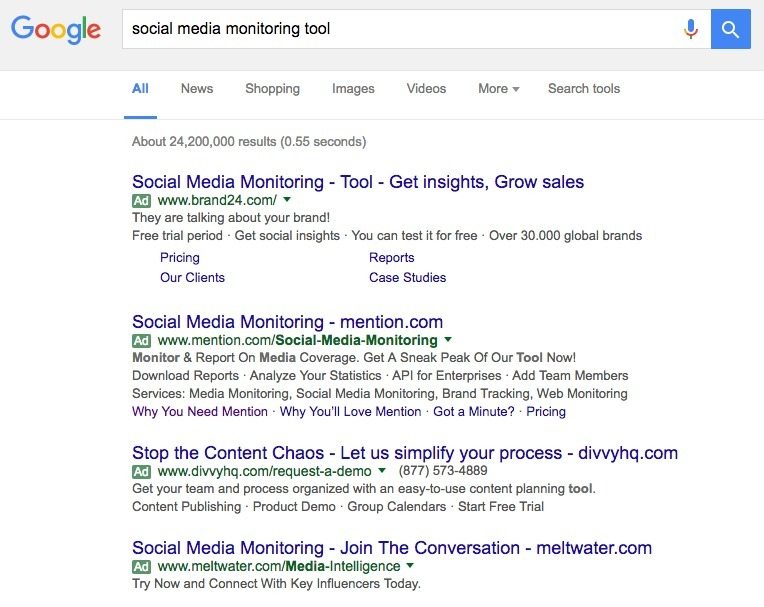
Let’s say Meltwater’s ad catches my eye — so I click it — and I’m directed to this page:
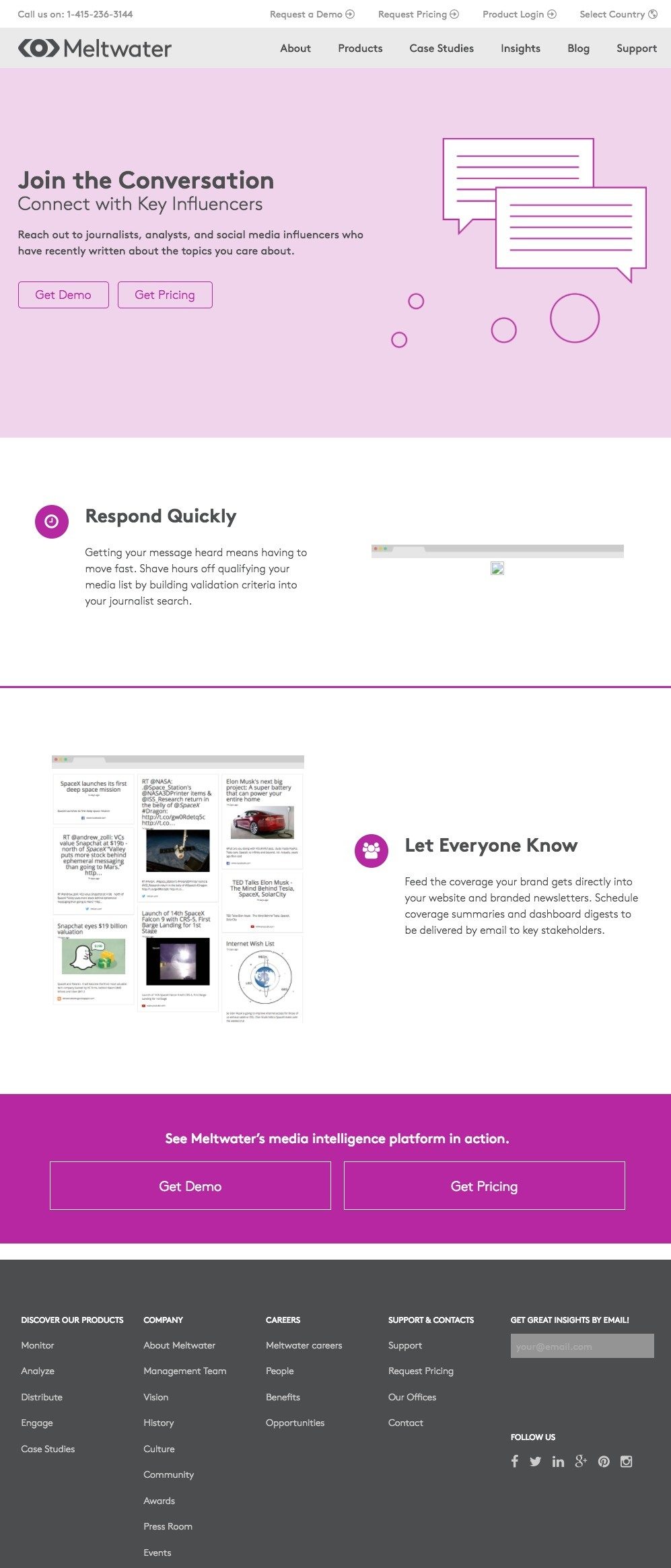
Where is the social media monitoring tool I was looking for? Do they have screenshots of their product or testimonials from satisfied customers? This “post-click landing page” includes a full navigation, an overwhelming footer, competing calls-to-action, and numerous other links that direct me off the page. For those reasons, it’s not a post-click landing page or designed to convert visitors into leads.
I backed out of the page and viewed my options again. This time I click on Mention’s ad, and am sent to this page:
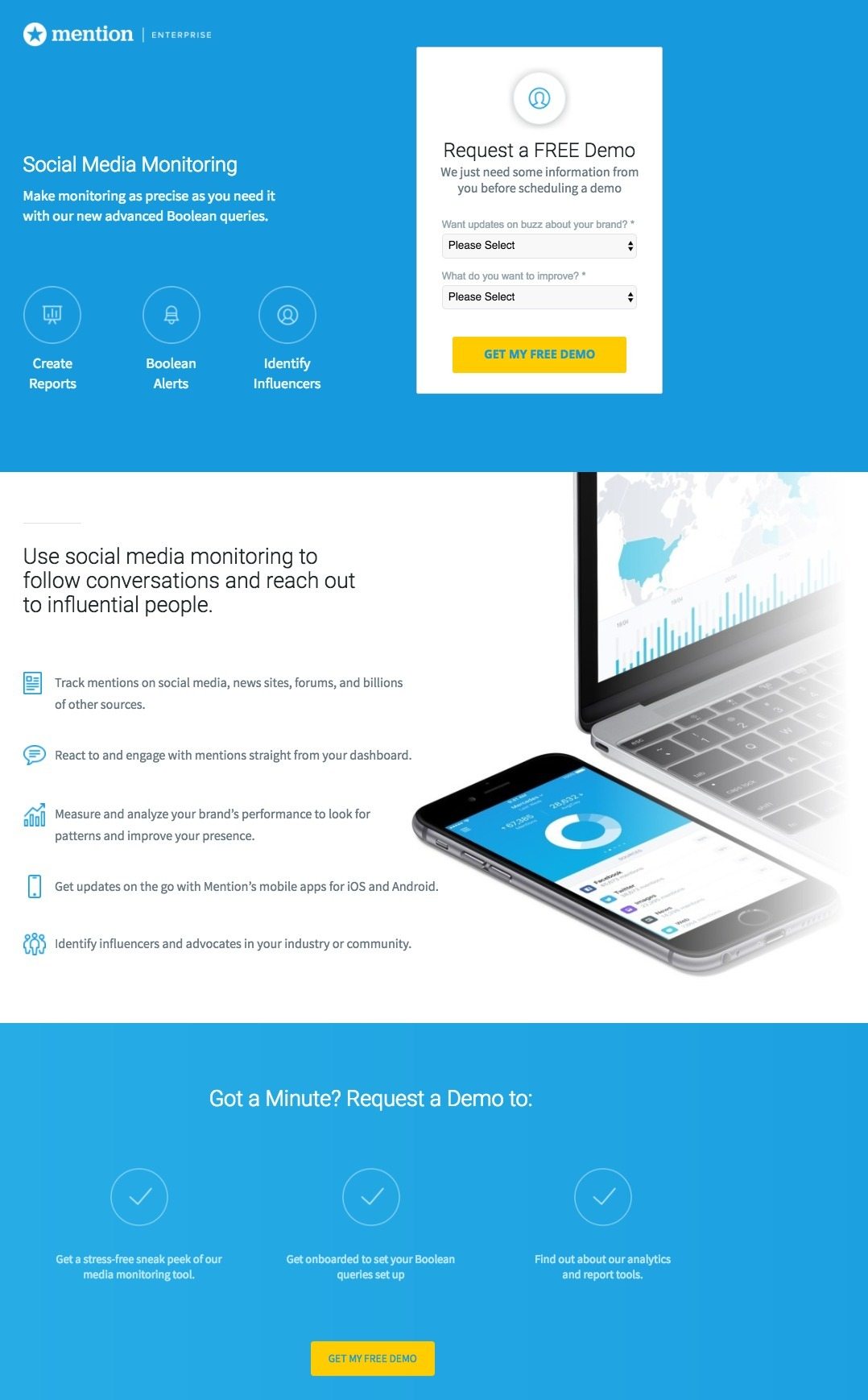
The page’s headline uses message matching, includes easy-to-read copy, a short form, only one CTA, and images that tell me the service is multi-device compatible.
Which page do you think I converted on? Right, Mention, because their page spoke directly to me and addressed my buying intent, wants, and needs. This type of focused page is what marketers should strive for to increase conversion rates and provide the best user experience possible.
How Instapage works to enable post-click landing page marketing at scale
Instapage is the most powerful post-click landing page platform available. Marketing teams and agencies no longer have to suffer through response delays from team members to get necessary tasks completed to create and publish post-click landing pages.
Our customizable templates and designer-friendly software allows marketers to:
- Create pages quickly and easily
- Integrate with over 20 popular marketing tools
- Publish to WordPress, Drupal, Facebook, and your own custom domain
- Optimize all of your post-click landing pages with advanced A/B testing capabilities
- Collaborate with team members more efficiently than ever
Already have a high converting post-click landing page you want to duplicate without having to start from scratch? You can download that page and re-upload it as a template for future pages.
The best part of all this? You can do everything without needing IT resources!
Advertisers have no more excuses not to be providing an incredibly relevant and personalized advertising experience. post-click landing pages make this a reality.
What is the future of advertising personalization?
Whether you’re walking down the street, watching TV or surfing online; like it or not, you and I are exposed to more ads (and more targeted ads) with each passing day. Hang on to your hats, folks, because the Minority Report experience may be more mainstream than ever before.
At Instapage, we believe every ad deserves a page. Our post-click landing page solution lets marketers create, integrate, and publish post-click landing pages at scale. Get started today by signing up for an Instapage Enterprise demo today.

See the Instapage Enterprise Plan in Action.
Demo includes AdMap™, Personalization, AMP,
Global Blocks, heatmaps & more.
